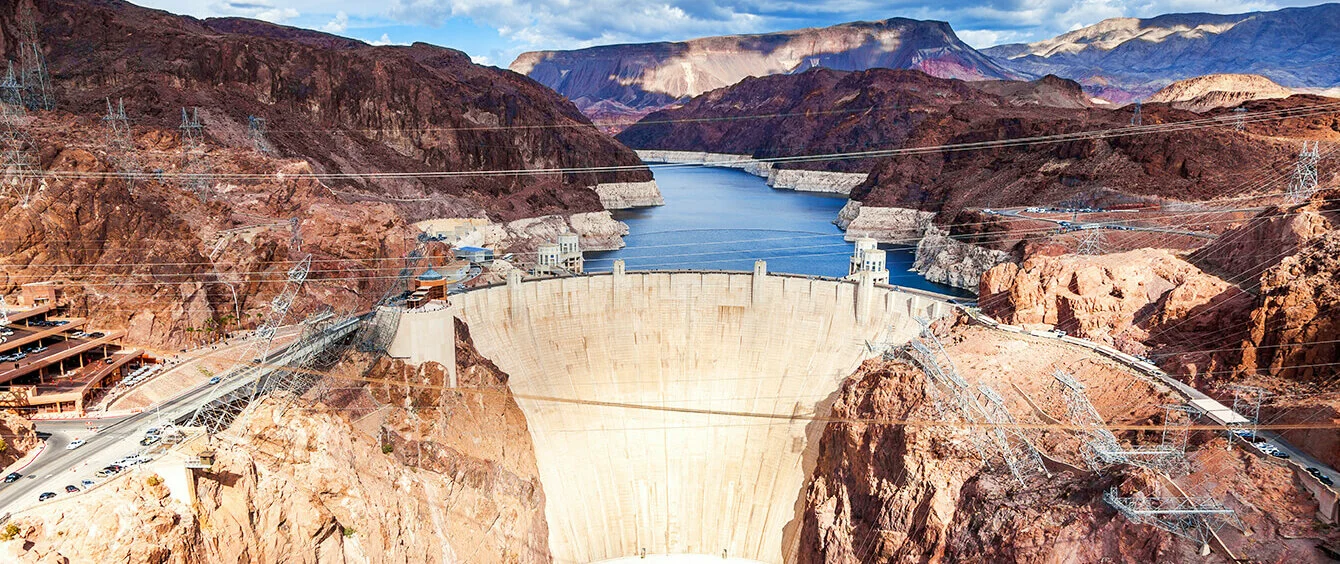The USA plans to spend three billion dollars upgrading the Hoover Dam to a pumped-storage power station by 2028. The backdrop to this is that California has to pay for other states to purchase its surplus solar power in order to avoid blackouts.
It is a tried and tested concept: Excess electricity, produced by solar panels or wind turbines for example, is used to pump water into a storage basin. Whenever demand for electricity rises, water is released from the basin, flowing through the turbines and generating electricity. This is the mechanism of a pumped-storage power plant. Since only about 25 percent of the energy used is lost, hydro storage facilities are considered to be efficient and more cost-effective than other types of energy storage systems.
A pumped-storage power station of gigantic dimensions has recently been planned in the west of the USA: the Hoover Dam. The legendary dam wall, which has been damming the Colorado River to form the largest water reservoir in the USA since the 1930s, is set to be upgraded with powerful pumps by 2028 at a cost of three billion dollars. This reason for this is that the state of California produces more solar power than needed. To reduce grid load and avoid blackouts, the power producers currently have to pay for other states to buy their electricity.
The New York Times published a special on the Hoover Dam Project that contains the project’s key facts and figures as well the rationale behind it.
Photo credit: turtix, shutterstock.com
